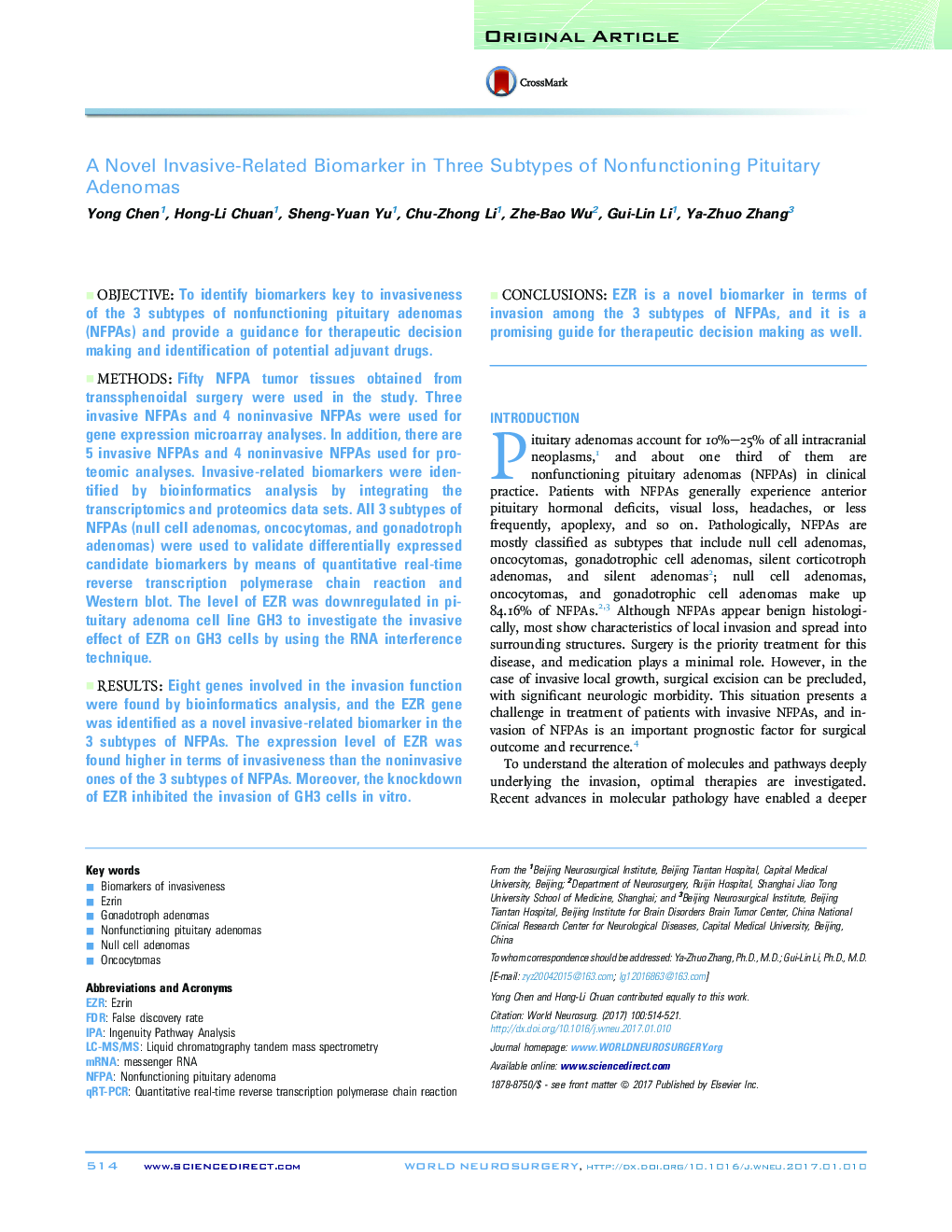| Article ID | Journal | Published Year | Pages | File Type |
|---|---|---|---|---|
| 5634530 | World Neurosurgery | 2017 | 8 Pages |
ObjectiveTo identify biomarkers key to invasiveness of the 3 subtypes of nonfunctioning pituitary adenomas (NFPAs) and provide a guidance for therapeutic decision making and identification of potential adjuvant drugs.MethodsFifty NFPA tumor tissues obtained from transsphenoidal surgery were used in the study. Three invasive NFPAs and 4 noninvasive NFPAs were used for gene expression microarray analyses. In addition, there are 5 invasive NFPAs and 4 noninvasive NFPAs used for proteomic analyses. Invasive-related biomarkers were identified by bioinformatics analysis by integrating the transcriptomics and proteomics data sets. All 3 subtypes of NFPAs (null cell adenomas, oncocytomas, and gonadotroph adenomas) were used to validate differentially expressed candidate biomarkers by means of quantitative real-time reverse transcription polymerase chain reaction and Western blot. The level of EZR was downregulated in pituitary adenoma cell line GH3 to investigate the invasive effect of EZR on GH3 cells by using the RNA interference technique.ResultsEight genes involved in the invasion function were found by bioinformatics analysis, and the EZR gene was identified as a novel invasive-related biomarker in the 3 subtypes of NFPAs. The expression level of EZR was found higher in terms of invasiveness than the noninvasive ones of the 3 subtypes of NFPAs. Moreover, the knockdown of EZR inhibited the invasion of GH3 cells in vitro.ConclusionsEZR is a novel biomarker in terms of invasion among the 3 subtypes of NFPAs, and it is a promising guide for therapeutic decision making as well.
